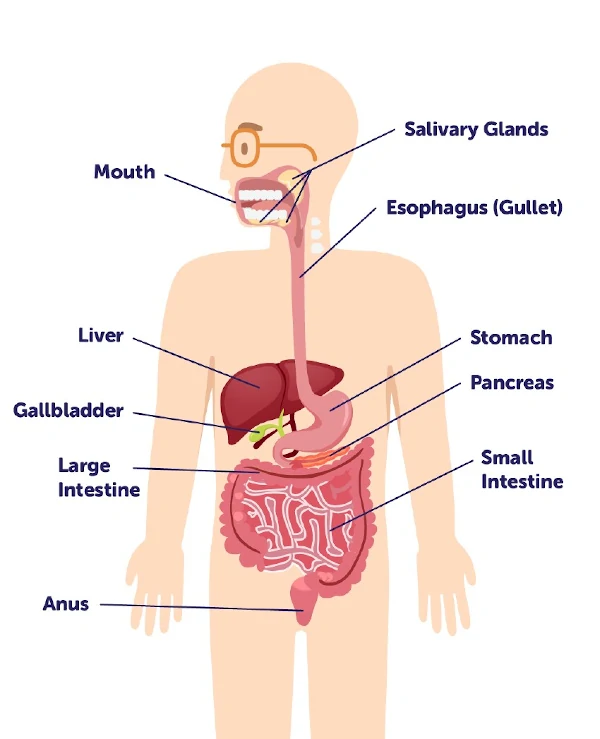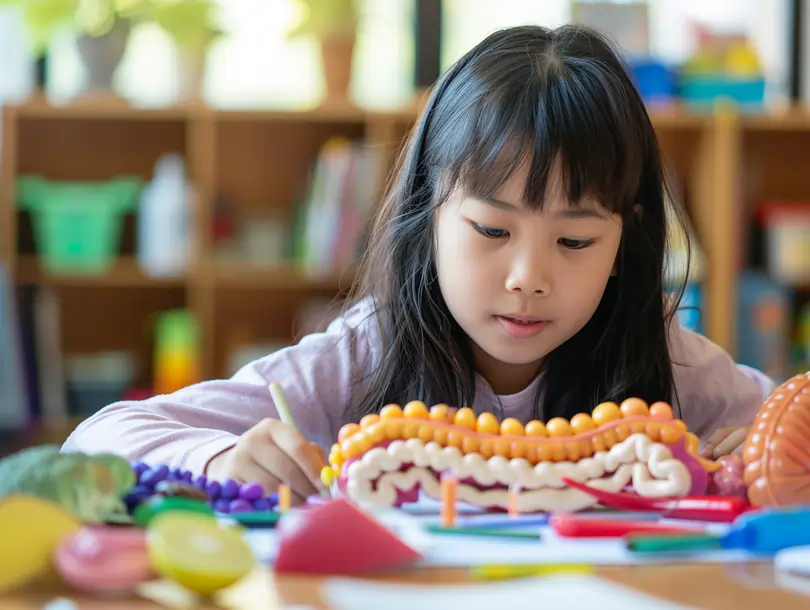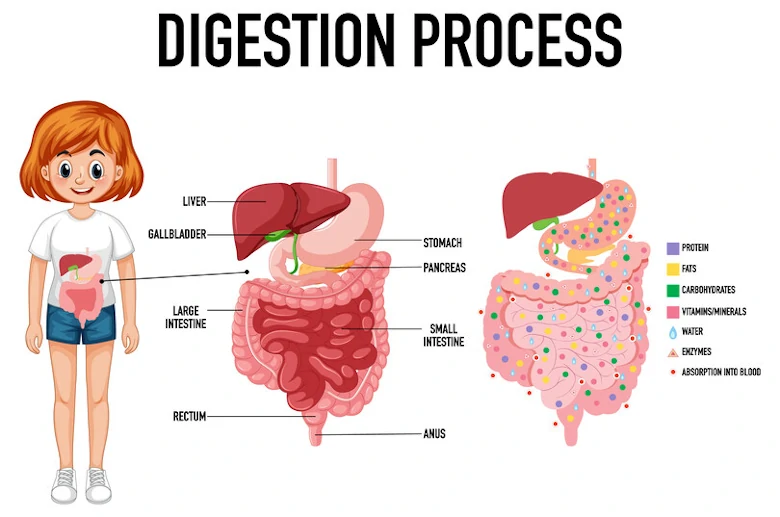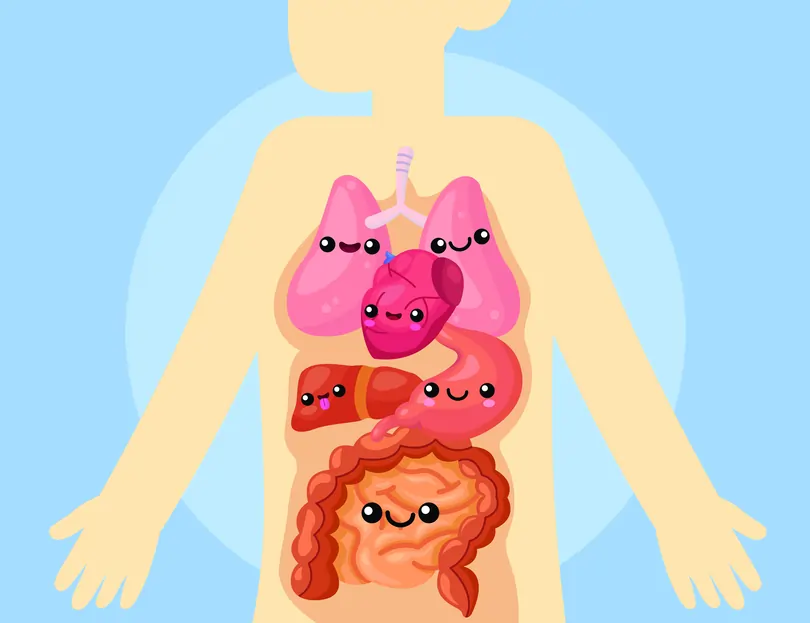Plants And Their Parts
In this article, you will be introduced to plants and their parts according to the Singapore Primary 3 Science Syllabus. We will focus on the functions of the roots.
Watch our video lesson!
Note: This video lesson on Plants and their Parts is just one of the many weekly GenieClass lessons you can attend from the comfort of your home. If you prefer learning in a physical classroom, check out our new tech-enhanced tuition classes at Geniebook CAMPUS.
What Are Plants?
A plant is an organism that has roots, stems, and leaves. Each part of the plant serves a particular function to ensure the survival of the plant.
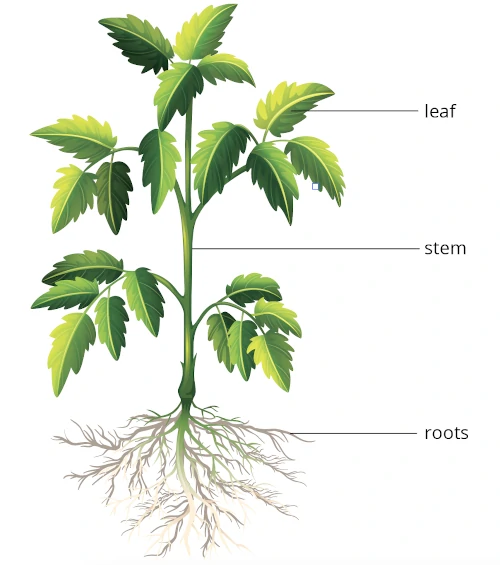
The leaves of a plant help to trap sunlight (light energy) for the plant during photosynthesis and also allow gaseous exchange with the surroundings. The stem of a plant helps to connect the roots of the plant to the leaves and transports water from the roots to the rest of the plant. The stem also transports food made by the leaves to all the other parts of the plant. The roots of a plant help to hold (anchor) the plant firmly to the ground and absorb water and minerals from the soil.
Watch our video lesson!
Functions Of Roots
The main functions of the roots of a plant are:
- hold (anchor) the plant firmly to the ground
- absorb water and minerals from the soil
Fine root hairs grow out from the main root to help absorb water and minerals from the soil. The root hairs are long and narrow to increase the surface area in the soil for more absorption of water and minerals from the soil.
Different Types Of Roots
Different types of plants have different types of roots. Some roots are known as storage roots while some roots are known as breathing roots. Such roots have other special functions to help the plant survive in their environment.
Storage roots are roots that store excess food for the plant. These types of roots are often swollen. Examples of storage roots are beetroot, carrots, radish, sweet potatoes and turnips.

Image credit: Foodsmiths - Organic Beetroots
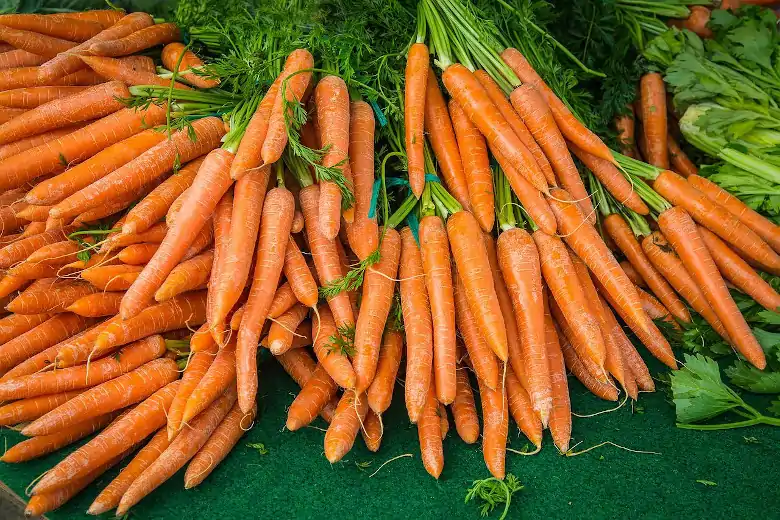
Image credits: maxmann - Carrots

Image credits: matthiasboeckel - Radish Root Vegetables

Image credits: auntmasako - Sweet Potato Red
Breathing roots are roots that grow out of the soil (or ground). Plants that have such breathing roots usually grow in oxygen-poor soil and the roots have to grow out of the soil in order to obtain more oxygen and/or water from the surrounding air for survival. Examples of such plants are the banyan tree and the mangrove tree.
Conclusion
In this article, we learnt about the parts and functions of a plant. Each part of the plant is equally important and plays an important role in the survival of the plant. We also zoomed in on the function of roots and examined two different types of roots.
Test Your Concepts
Answer the following questions based on the concepts that we have covered in this article. If you are unclear, you may want to revisit the relevant section to revise the concepts.
Question 1:
The diagram below shows a plant.

What is the function of Part K?
- Part K holds the plant upright.
- Part K holds the plant firmly to the ground.
- Part K transports water to all parts of the plant.
- Part K absorbs water and minerals from the soil.
Choose the correct option
- A and C only
- B and D only
- C and D only
- A B and D only
Solution:
(2) B and D only
Explanation:
Part K is the roots of the plant which helps to hold the plant firmly to the ground and also absorb water and minerals from the soil. The stem (not roots) of the plant helps to hold the plant upright and transport water from the roots to all parts of the plant.
Question 2:
Cody carried out an experiment using two similar plants. The roots of the plant in set-up Y were cut off while the roots of the plant in set-up X were not cut. Both beakers contained the same amount of water and were left at the same place for 5 days. Cody measured the amount of water left after 5 days.
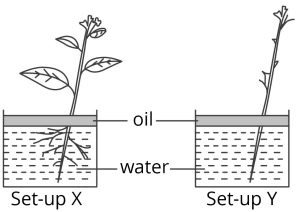
What would Cody observe after 5 days?
Solution:
Set-up X would have less water left as compared to set-up Y.
Explanation:
The plant in set-up X has roots to absorb water while the plant in set-up Y does not have roots to absorb water. Thus, the plant in set-up X would absorb more water and would have less water left.
Question 3:
Mandy wanted to carry out an experiment to find out if plants can absorb water without roots. Which of the following variables should she keep constant in order for the experiment to be a fair one?
- type of plant
- amount of water
- presence of roots
- number of leaves
Choose the correct option
- A and D only
- B and C only
- A, B and D only
- A, B, C and D
Solution:
(3) A, B and D only
Explanation:
The changed variable in Mandy’s experiment is the presence of roots. Thus, the type of plant, the amount of water and the number of leaves must be kept the same to ensure that the results obtained are solely due to the presence of roots and not due to the type of plant, the presence of roots and the number of leaves.
| Continue Learning | |
|---|---|
| Systems | Diversity Of Materials |
| Plants And Their Parts | Living And Non-Living Things |
| Diversity Of Plants | Digestive System |
| Diversity Of Animals | Fungi & Bacteria |
Test Yourself
Which of the following options are part of a plant system?
A: Pot
B: Soil
C: Leaf
D: Root
Choose the correct option
The pot and the soil it contains is a part of the plant's environment and not part of the plant itself. Therefore, the answer is option (2), the leaf and the root.
The diagram below shows a plant.
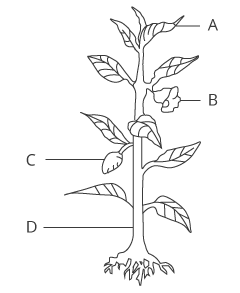
Based on the diagram above, answer the following question. Which part of the plant protects the seeds?
C is the fruits of the plant
Why are flowers important to plants?
1: Flowers are needed to beautify the place.
2: The sweet smell of flowers is to attract more people to it.
3: The seeds in the flower are needed to grow into new plants.
4: Flowers are needed to attract animals like insects to it so that pollination can take place.
The key question is why are flowers important to plants. Meaning how does their function help the plant in any way?
For the flowers, it smells sweet and has nectar is to attract pollinators towards themselves, so that their flowers may have a higher probability to pollination and fertilisation such that reproduction can take place. Attracting humans has no intrinsic benefit for the plant.
Note that seeds are not found in flowers but in fruits.
4 students made some statements about a part of a plant.
Jane: It is a plant part.
Tom: It carries food made by the leaves to the rest of the plant.
Mark: It carries water and mineral salts from the roots to the rest of the plant.
John: It holds the leaves and enables them to reach for sunlight which is needed for making food.
Which one of the following plant parts best fits the descriptions above?
Stem is the answer
Connie wanted to find out if water can travel to the leaves without any roots. She set up the experiment with four identical flasks using the same type of plant. Each flask contained the same amount of coloured water.

Which two of the above set-ups should she use in order to conduct a fair test?
The variable to be changed is the presence of roots.
The number of leaves should be kept constant (i.e. 4 leaves on each plant).




 SG
SG  VN
VN 
